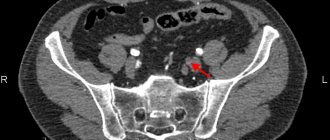Almost everyone hears the phrase “diabetes mellitus”; it frightens little sweet tooth lovers, and those over 50 often talk about it. But they hardly talk about prediabetes , and in vain. But diabetes mellitus is almost always preceded by prediabetes - a precursor condition in which the first pathological changes begin to occur in the body. Prediabetes and diabetes mellitus differ in blood sugar levels: people with prediabetes have higher glucose levels than normal, but not enough to be diagnosed with type 2 diabetes. Fortunately, with timely diagnosis and treatment, the condition can be corrected and the development of dangerous complications can be prevented. D ILA experts will tell you how.
Diabetes mellitus affects 8% of our planet's inhabitants: that's almost 600 million people worldwide. About 1.3 million registered cases in Ukraine. But experts clarify: the real number of cases is much higher, since many simply do not know that they have diabetes. The disease develops gradually, in the initial stages it is asymptomatic or with very mild clinical manifestations. Therefore, diabetes mellitus is often diagnosed late, already at the stage of severe vascular or infectious complications. In order not to miss the disease when it is still correctable, it is necessary to constantly monitor your blood sugar levels and check your health, special attention should be paid to early laboratory markers of prediabetes. At DILA you can undergo comprehensive screenings Program 148 “Prevent diabetes and associated risks” and Program 191 “Risk assessment of type 2 diabetes mellitus”, as well as individual studies - venous blood glucose, glycated hemoglobin (HbA1c), HOMA index and others.
Laboratory diagnostics will reveal a tendency to diabetes and exclude one of the possible causes of myocardial infarction, memory impairment, blindness, renal failure, excess weight, erectile dysfunction.
Important! If type 2 diabetes is not detected in time, it can cause the following serious complications:
- coronary heart disease and myocardial infarction;
- stroke;
- diabetic retinopathy and, as a result, vision loss;
- hearing impairment;
- diabetic nephropathy and renal failure;
- impotence;
- trophic non-healing ulcers on the legs and, as a result, amputation of the limbs;
- kidney and bladder infections;
- hypertension and other dangerous consequences.
Early detection and timely treatment of diabetes mellitus reduces the severity and complications of the disease. And if disorders are detected at the stage of prediabetes, most pathological changes are reversible.
Scale of the problem
The end of the 20th and beginning of the 21st centuries were marked by a significant increase in diabetes mellitus. The rapid increase in incidence indicates a global epidemic. According to the conclusions of WHO and the International Institute for Diabetes Research, we are facing a global catastrophe, which is already being called the “coming health crisis of the 21st century.” It could reduce the average life expectancy of people for the first time in 200 years. And, if 30 years ago the number of people with diabetes in the world did not exceed 30 million people, today this figure is rapidly approaching 500 million.
The earliest disability among all diseases and high mortality rates among patients have identified diabetes mellitus as one of the most important priorities in the national health care systems of all countries of the world. Patients with diabetes are 4 times more likely to die from cardiovascular complications (heart attacks, strokes); even during the global COVID-19 pandemic, it was patients with diabetes who constituted the main risk group for mortality from complications. Severe consequences that significantly reduce the quality of life are:
- retinal damage (diabetic retinopathy, blindness);
- kidney damage (nephropathy, chronic renal failure);
- damage to nerve endings at different levels (polyneuropathy);
- diabetic foot.
These complications cause disability and significantly reduce life expectancy.
“The first signs” of diabetes
Diabetes mellitus is preceded by the following conditions:
- Obesity of varying degrees, including the stage of overweight.
- Insulin resistance is elevated levels of insulin that are unable to effectively lower blood glucose (sugar) levels.
- Increased blood glucose levels on an empty stomach and after meals.
- Metabolic syndrome is a combination of several pathological conditions: abdominal obesity, high blood pressure, increased blood glucose and “bad” cholesterol fractions
It is noteworthy that all these changes are reversible if they are detected in the early stages and therapeutic and preventive measures are taken in a timely manner.
Already at the above stages of prediabetes, early changes are detected in small nerve fibers, in the vessels of the kidneys and retina. Pain and paresthesia in the feet (pain, burning, tingling sensation, cramps, sensation of “goosebumps” on the skin) may also occur, which are associated with damage to small vessels and nerve endings of the foot. Changes in the fundus, blood vessels of the kidneys and feet in the stage of prediabetes are a poor prognostic criterion associated with the risk of more rapid development of complications. Also, in the previous stages, combined, simultaneous damage to the vessels of the retina and kidneys is observed. This is due to the anatomical similarity of the blood vessels of both organs. In addition, the appearance of sugar in the urine leads to inflammatory whitening of the kidneys - pyelonephritis, which contributes to the development of chronic renal failure.
The platform for preventing diabetes mellitus is a timely visit to an endocrinologist and diagnosis of laboratory markers of prediabetes. In this case, the time factor is of key importance.
Sugar
All of humanity has risen to fight sugar. This is understandable: diabetes is a dangerous, widespread and incurable disease. Therefore, we do not recommend consuming sugar, and some are even prohibited. And on the other hand?
Once upon a time, I spontaneously had a thought: we don’t know what sugar really is. We treat it somewhat simply. They looked at its crystal lattice, found nothing in it (neither vitamins nor other useful substances) and decided that sugar is a useless product, at a minimum, and even a harmful product, at a maximum.
Question answer
Will giving up sweets affect brain function? I tried to remember, if not a large-scale, but at least some more or less thoughtful study of sugar and its effect on the human body (except for the well-known harmful one, of course) - and I didn’t remember, I didn’t come across such a scientific work.
However, interesting information still appeared. In Italy there is an entire institute that studies human taste. And the taste of sweets as well. In order to help humanity in the fight against diabetes, scientists decided to try to turn off the taste for sweets, naturally, first in experimental mice. We learned and turned it off. And they achieved what they wanted: the mice became indifferent to sugar, and they did not eat it. In general, they gave up sweets and... stopped reproducing! It was the male mouse that no longer wanted to mate with his girlfriends. And why did they need it now if they stopped producing semen? Fortunately, the process turned out to be reversible. The mice regained their sense of taste for sweets, they began to eat it again, and gradually sperm production was restored.
Now five tastes are known - sour, bitter, salty, sweet, and the recently added “taste of tastes”, discovered by Japanese scientists. The taste of fat is coming. He has already been discovered, but has not yet been included in the official top five. (I suppose it is still “recognized.”) Think for a moment, of all the listed tastes, which one is most dear to us? Yes, sweet, of course! Admit it honestly, how all these cakes, pastries, and sweets beckon and attract us. Remember the golden brown crust on fried meat, the mere sight of which makes your mouth water. But this attractive crust is nothing more than baked sugar contained in the meat! What food does our brain prefer? Yes sugar, of course. From it he best and fastest draws energy for his activities. Well, why, tell me, did nature need this - to stimulate us to eat sweets? So that we end up being banned?
I think we just don't understand sugar. Maybe that is why he cripples us so much, that due to our ignorance we treat him incorrectly? We treat it somehow childishly - either allow it or prohibit it. How will be correct? And if scientists understand the essence of sugar, maybe our attitude towards it will change radically?
Article on the topic
Maple syrup, molasses and 6 more natural sugar substitutes Since we are talking about sugar here, I will mention another paradoxical point of view. There are many scientific studies that claim that there are foods that lower blood sugar levels. On the other hand, there are very authoritative scientists who claim that “not a single food product has a glucose-lowering effect!” And what should we, potential patients, do about it? It’s easier for doctors - they stand by their positions, rejecting “foreign” ones, and it is according to their knowledge that they prescribe treatment. But we want the best, we need to get better!
What is prediabetes and metabolic syndrome
Prediabetes is a condition of impaired carbohydrate metabolism, leading to a high risk of developing diabetes mellitus. Unlike diabetes, prediabetes is reversible if you take your health seriously and make lifestyle changes. This condition is associated with a quantitative and/or qualitative deficiency of insulin. The cause may be impaired glucose tolerance (when blood sugar is higher than normal after specific tests) and impaired fasting glycemia (when blood sugar is higher than normal on an empty stomach). In other words, prediabetes is a condition in which glucose is above normal values, but below the level established for diabetes.
Tissue insensitivity to insulin increases the risk of developing both prediabetes and type 2 diabetes. Insulin is a pancreatic hormone that helps transport glucose found in food from the blood into cells. We need glucose to produce energy. Insulin resistance means that the body produces insulin but does not use it effectively. Glucose accumulates in the blood, which can cause prediabetes, and subsequently diabetes mellitus. Most people with insulin resistance don't even know they have prediabetes for many years until it progresses to diabetes. If insulin resistance is diagnosed early, this dangerous disease can be prevented. If left untreated, prediabetes progresses to diabetes.
The main risk factors for the development of prediabetes and type 2 diabetes mellitus are divided into uncontrolled and controlled. The first group includes age over 45 years, cases of the disease in close relatives, and a history of gestational diabetes (diabetes during pregnancy).
Controlled factors:
- excess weight;
- high blood pressure;
- low levels of HDL (high density lipoprotein);
- high levels of triglycerides (fats).
By the way, all these factors are components of metabolic syndrome. It will be discussed below.
Metabolic syndrome. This is a symptom complex of interrelated risk factors for the development of cardiovascular diseases and diabetes mellitus. These factors include:
- dysglycemia (hyper- and hypoglycemia);
- high blood pressure;
- increased triglyceride levels;
- low high-density lipoprotein (HDL) levels
- obesity.
Diabetes mellitus, arterial hypertension, excess weight, coronary heart disease and thrombophlebitis are well known to modern people. Unfortunately, very often these disorders do not occur individually, but together. This phenomenon was called metabolic syndrome. In simple words, metabolic syndrome is a set of metabolic, hormonal and clinical disorders in the human body, the basis of which is obesity.
Today, metabolic syndrome has received many other names: you can hear in everyday life such names as “syndrome X”, “deadly quartet”, “Reaven syndrome” (after the name of Professor G. Reaven, who first summarized the symptoms), “insulin resistance syndrome” . WHO experts described it as the “plague of the 21st century,” and this assessment is not unfounded: symptoms of metabolic syndrome are already observed in 20-40% of the population, including children. The first signs of the disorder can appear as early as adolescence, and occur against the background of an increase in fat deposits.
The initial diagnosable symptoms of metabolic syndrome are:
- dyslipidemia - a violation of the normal ratio of fats in the blood;
- arterial hypertension – increased blood pressure levels.
But all metabolic manifestations of metabolic syndrome are based on the same insulin resistance - decreased sensitivity to insulin. Let us remember that all this occurs against the background of excess weight and increased blood pressure. Atherosclerosis and coronary heart disease are also closely related to metabolic syndrome.
However, not all symptoms of metabolic syndrome appear simultaneously and to the same extent. MS is often diagnosed even with slight obesity in combination with other symptoms - increased fatigue, shortness of breath, headaches, frequent urination, thirst, increased appetite, apathy. Another main symptom of metabolic syndrome is type 2 diabetes. You should also consult a doctor if you have angina (recurrent pain in the heart), erectile dysfunction in men and polycystic ovary syndrome in women, gout and increased uric acid in the blood.
Increased cholesterol levels
Hepatitis
Atherosclerosis
Diabetes
35306 March 18
IMPORTANT!
The information in this section cannot be used for self-diagnosis and self-treatment.
In case of pain or other exacerbation of the disease, diagnostic tests should be prescribed only by the attending physician. To make a diagnosis and properly prescribe treatment, you should contact your doctor. Increased cholesterol levels: reasons for the increase, what diseases it occurs with, diagnosis and treatment methods.
Definition
Cholesterol is a fat-soluble alcohol molecule and is a very important element of cell membranes, a precursor to hormones. However, as Paracelsus said: “Everything is poison and everything is medicine, only the dose makes it one way or the other.” The same is true for cholesterol. An increase in its level in the blood leads to many diseases, and it is important to control cholesterol levels to prevent, first of all, cardiovascular pathology.
The presence of problems with the metabolism of fats in the body can be indicated by specific external manifestations: subcutaneous deposits of cholesterol under the skin of the eyelids (xanthelasmas) and in the area where the tendons pass (xanthomas); cholesterol deposits can also be detected in the form of a grayish-white rim along the edges of the cornea of the eye.
Types of increased cholesterol
Cholesterol is an indicator of fat metabolism in the body, and it is important to evaluate its level in combination with other indicators of the lipid (fat) spectrum of the blood.
Depending on the ratio of cholesterol and other blood fats, several phenotypes of dyslipidemia (lipid metabolism disorders) are distinguished:
Phenotype I – cholesterol levels are normal or slightly elevated, while triglyceride levels are very high;
Phenotype IIa – cholesterol and low-density lipoprotein levels are increased. This phenotype and all subsequent ones have varying degrees of atherogenicity, that is, they are a factor in the development of atherosclerosis;
II b phenotype - in addition to increasing blood cholesterol levels, the level of triglycerides and low and very low density lipoproteins (LDL and VLDL) increases;
III phenotype - characterized by increased levels of triglycerides, cholesterol and intermediate-density lipoproteins (IDL);
IV phenotype – predominantly increased levels of VLDL and triglycerides;
Phenotype V – the level of cholesterol, triglycerides, chylomicrons and VLDL is significantly increased.
This classification allows the doctor to interpret the results of the lipid profile and provides the opportunity to make the right decision on prescribing lipid-lowering therapy.
Possible causes of increased cholesterol levels in the blood
Lipid metabolism in the body is disrupted due to three groups of factors:
- Hereditary predisposition in combination with unfavorable environmental factors.
- Secondary dyslipidemias are disorders of fat metabolism that occur in various diseases.
- Alimentary dyslipidemia is a change in the balance of fats that directly depends on dietary habits.
More often than others, doctors are faced with nutritional hypercholesterolemia
, which is primarily observed in the first day after consuming large amounts of fatty and fried foods.
If you regularly eat large amounts of fat, then constant hypercholesterolemia occurs.
Primary dyslipidemia
is explained by a mutation in the parents' genes, which is inherited and causes a disruption in the synthesis and use of cholesterol in the body.
Among the causes of secondary dyslipidemias
One of the leading positions is occupied by diseases of the thyroid gland. With hypothyroidism, the content of the hormone T3 decreases, which leads to a decrease in the formation of receptors for LDL and a decrease in the utilization of cholesterol contained in the LDL molecule. Diabetes mellitus also disrupts cholesterol metabolism in the body - blood glucose levels increase, and its utilization occurs through fat metabolism, changing the balance of this system.
Cholesterol is involved in the formation of bile acids, therefore, when the outflow of bile is disrupted, for example, with cholelithiasis, “unused” cholesterol accumulates in the blood.
The opposite situation can develop when liver function is impaired (with cirrhosis, hepatitis) - cholesterol synthesis decreases, and a state of hypocholesterolemia is observed in the blood.
Taking certain medications (beta blockers, glucocorticosteroids, some diuretics, estrogens, immunosuppressants) leads to an increase in blood cholesterol levels.
Arterial hypertension is also a factor that affects the metabolism of fats in the body and increases the risk of developing atherosclerosis. Damage occurs to the vascular wall, where “warrior cells” - macrophages - rush. If the level of cholesterol and other lipid fractions is high, then lipids are captured by these cells. “Fed” cells linger in the vascular wall and gradually form an atherosclerotic plaque.
Metabolic syndrome is another pathological condition that involves increased cholesterol levels in the blood. Metabolic syndrome is a complex of metabolic disorders and hormone regulation, including abdominal obesity, insulin resistance, arterial hypertension and atherogenic dyslipidemia (dyslipidemia phenotype II–V).
The development of metabolic syndrome entails many other pathologies: coronary heart disease, severe forms of obesity, type 2 diabetes, stroke, thrombosis, infertility.
Which doctors should I contact if my cholesterol is high?
An increase in cholesterol levels is a pathological symptom and requires consultation with a doctor - first of all, to identify the causes of this condition. The doctor will prescribe the necessary laboratory and instrumental examinations and refer you for consultations to specialized specialists, among whom may be: an endocrinologist.
Diagnosis and testing for high cholesterol levels
Establishing the cause of increased cholesterol levels is possible only with the help of laboratory research methods. You can suspect an increase in cholesterol levels by the presence of xanthomas and xanthelasmas, as well as by the appearance of symptoms of atherosclerosis and its consequences - coronary heart disease, atherosclerosis of the arteries of the lower extremities. Depending on the symptoms, the doctor may prescribe a set of laboratory and instrumental examination methods:
- (blood glucose levels, control of cholesterol levels, very low, low and high density lipoproteins, blood electrolytes - potassium, sodium, calcium, creatinine levels, liver enzyme levels - ALT and AST, CPK (19) levels of total and direct bilirubin). Cholesterol levels should be checked in children from the age of two if there is a family predisposition to high cholesterol levels;
Which markers need to be constantly monitored?
Laboratory tests are something without which it is impossible to diagnose either prediabetes or diabetes, and ultimately, prescribe the correct treatment. However, to detect problems in the early stages, monitoring glucose levels alone is not enough. Often its concentration increases already at the stage of diabetes. To avoid missing life-threatening conditions and prevent the development of serious complications, it is necessary to monitor other laboratory markers.
Sugar for three months . To understand whether a person has diabetes or prediabetes, a blood glucose test is not enough. This test only shows your blood sugar levels at the time of the test. The results of a one-time study can be influenced by a huge number of factors - nutrition, stress, physical activity, concomitant diseases, sleep. Meanwhile, accurate data is especially important if there is a suspicion of prediabetes or diabetes mellitus. They both develop gradually, and with one-time tests it is possible to miss the onset of the disease.
The glycated hemoglobin (HbA1c) test displays the blood glucose level not at the time of blood collection, but over the previous three months. This is a type of hemoglobin that is irreversibly linked to glucose molecules. In diabetes mellitus, the amount of HbA1c increases. The advantage of the study is that in one test you will actually get 3 months of glucose monitoring. The fact is that the lifespan of red blood cells, which contain glycated hemoglobin, is 90-120 days. The higher the HbA1c level, the higher the glycemia in the last 3 months and, therefore, the higher the likelihood of developing diabetes complications.
Insulin resistance . To assess the state of tissue insensitivity to insulin, the HOMA (Homeostasis Model Assessment) index is used. It is calculated using the formula:
HOMA=fasting insulin (µU/ml)*fasting glucose (mmol/l)/22.5
The HOMA index can be used as an additional diagnostic indicator of metabolic syndrome, which increases the risk of developing diabetes and cardiovascular diseases.
Lipid profile . Studying the lipid profile will help to promptly detect changes in fat metabolism that are dangerous for blood vessels. The study is necessary for everyone who has signs of metabolic syndrome, who eats poorly, has bad habits and is included in other risk groups for cardiovascular diseases.
Key lipid profile indicators:
- Total cholesterol - its excess is associated with the development of atherosclerosis and cardiovascular disorders.
- HDL – high-density lipoprotein (“good cholesterol”). High concentrations of HDL reduce the risks of developing atherosclerosis and cardiovascular disorders.
- LDL and VLDL are low and very low density lipoproteins (“bad cholesterol”). They are considered harmful: there is a proven connection between high levels of LDL and the development of cardiovascular disorders. “Bad cholesterol” is deposited on the walls of blood vessels in the form of plaques, which can restrict the movement of blood and also make the vessels more rigid (atherosclerosis), which significantly increases the risk of heart disease (coronary artery disease, heart attack) and stroke.
- Triglycerides are fat particles, the content of which increases with uncontrolled diabetes and obesity. High triglyceride levels mean increased risks of developing cardiovascular disease.
All these indicators are part of the screening Program 113 “Lipid complex extended”. You can also undergo separate studies - “Cholesterol”, “HDL”, “LDL” and others.
Diabetes lowers the level of “good” cholesterol (HDL) and increases the level of “bad” cholesterol (LDL), significantly increasing the risk of problems with the cardiovascular system. This condition is very common and is called diabetic dyslipidemia. Research has shown a link between insulin resistance, a characteristic condition of prediabetes, and diabetic dyslipidemia, atherosclerosis and blood vessel problems. By the way, all these conditions can develop even before the onset of diabetes, which is why regular studies are so important for timely prevention and treatment of many complications.








